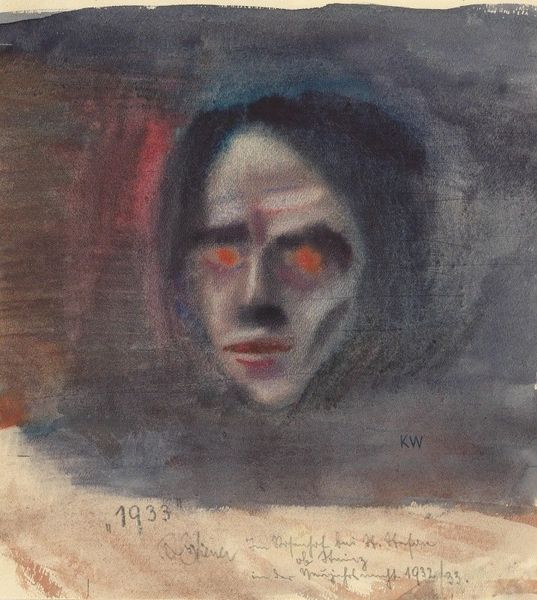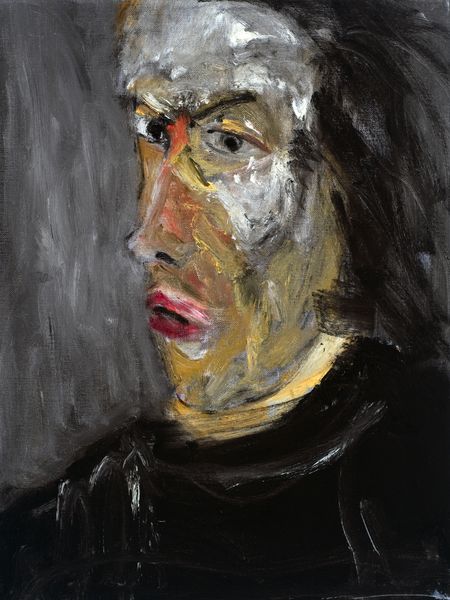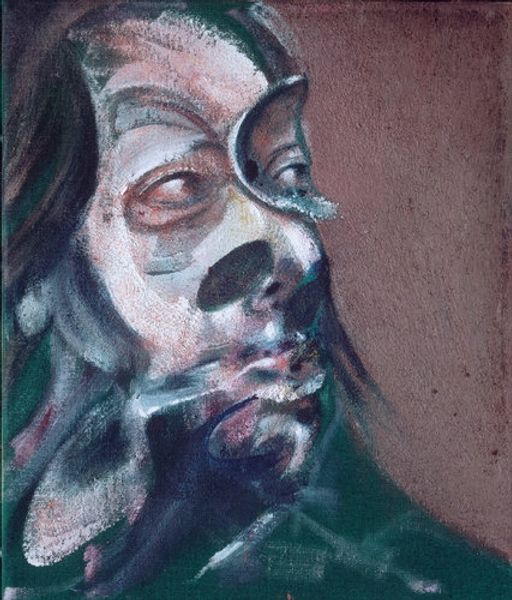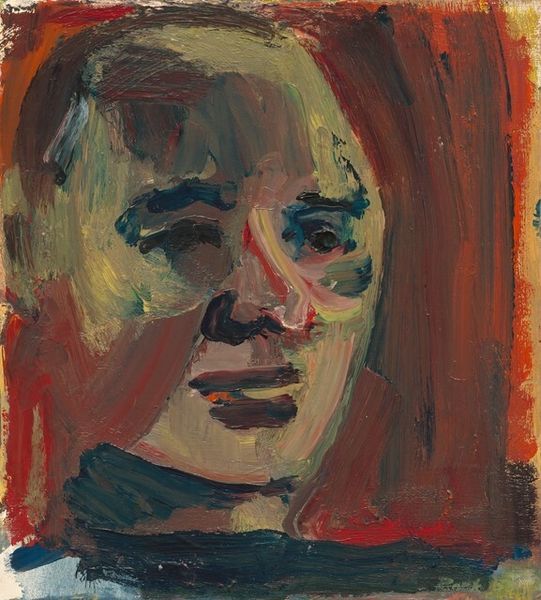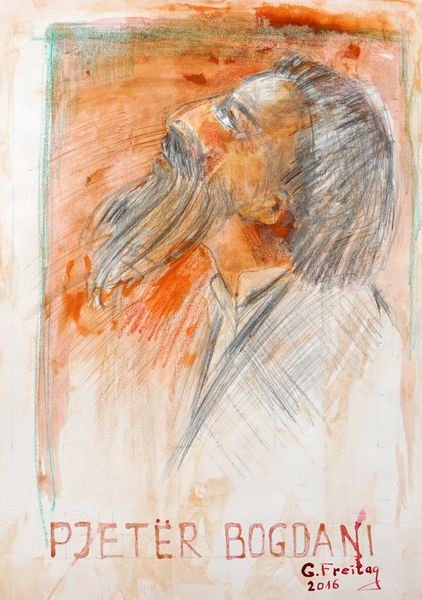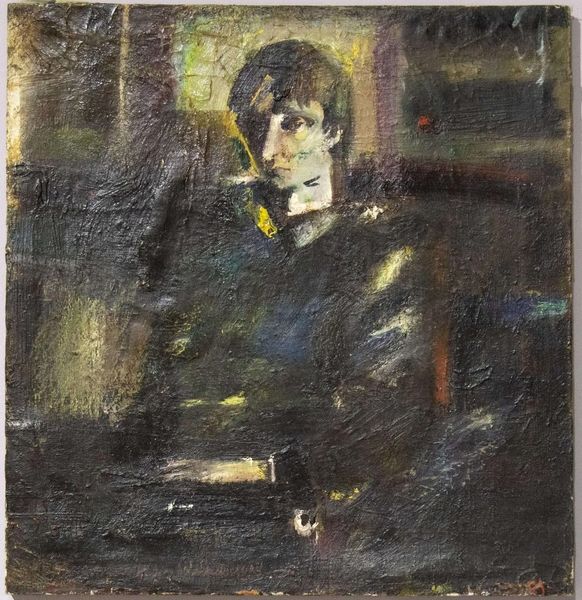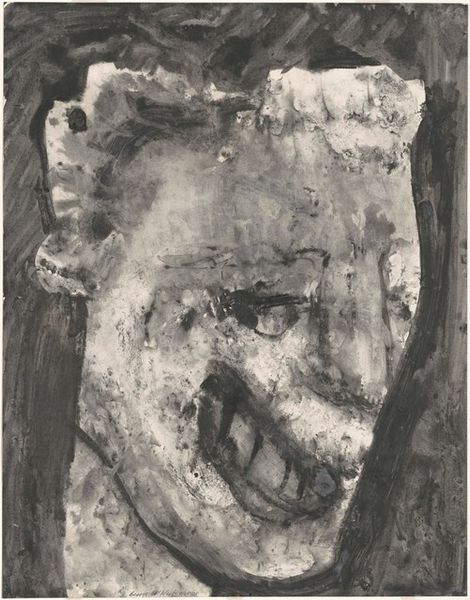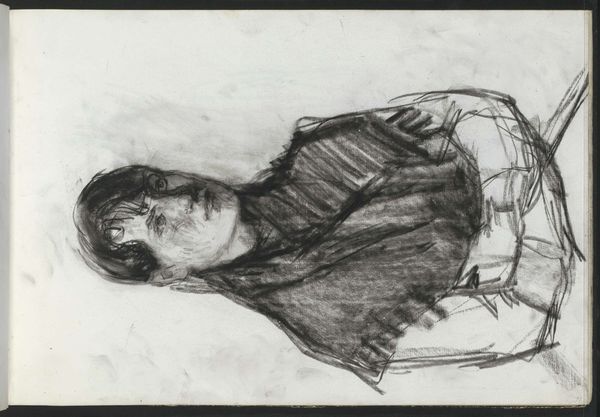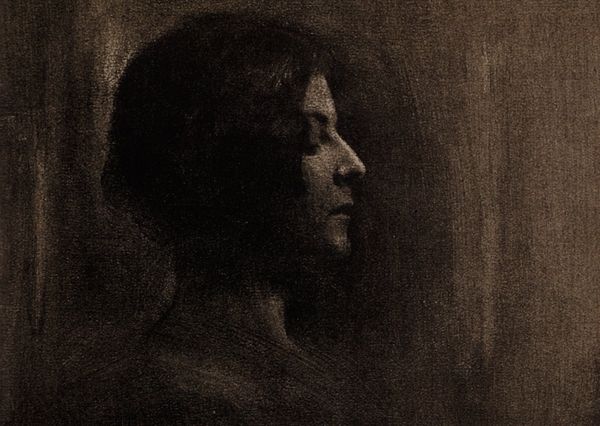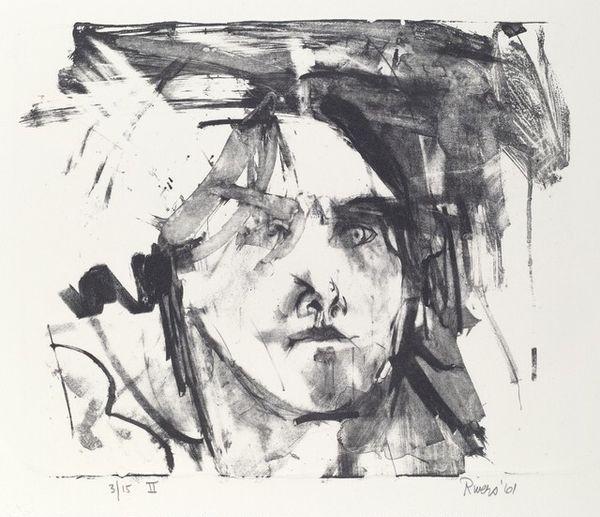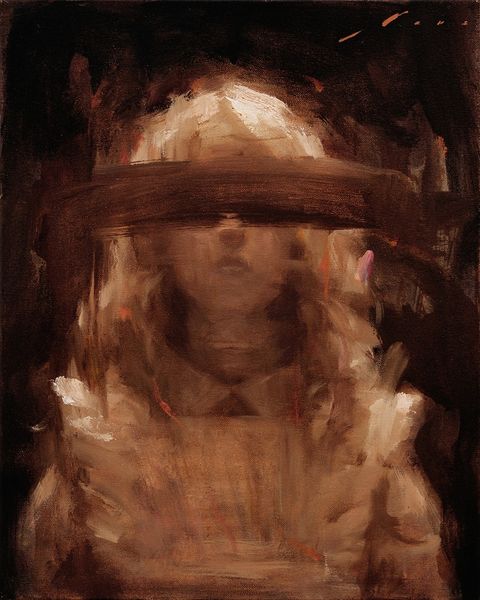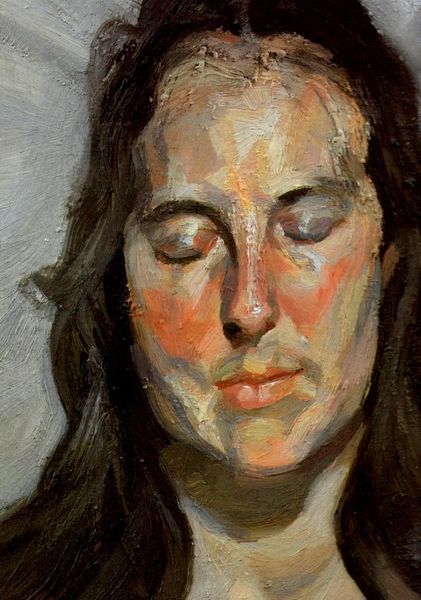
painting, oil-paint
#
portrait
#
figurative
#
painting
#
oil-paint
#
charcoal drawing
#
oil painting
#
academic-art
#
portrait art
#
realism
Copyright: Public Domain: Artvee
Editor: Here we have Edwin Austin Abbey’s "Figure Study," an oil painting likely created between 1871 and 1911. It's a close-up of a face, maybe a study for a larger work? It’s mood feels… introspective, almost mournful, gazing slightly upward. What do you see in this piece? Curator: This portrait offers us a glimpse into the construction of idealised masculinity within academic art. Note the upward gaze and slightly opened mouth. These stylistic features place the figure in a specific visual rhetoric - the expectation of enlightenment and public speaking, both traits and activities associated with male empowerment in that historical context. Consider this against a backdrop where opportunities for advancement for women and minorities in art, as in society, were systematically limited. How does knowing that influence your interpretation of the figure's posture? Editor: It's almost like he's trying to look... noble? But in a really prescribed way. It feels forced now that you mention it. I initially saw the upward gaze as hopeful, but within that context it takes on a totally different meaning. Curator: Exactly. Think, too, about whose perspectives were—and still are—validated within the art world. A figure study such as this was fundamental training, but for whom was that training available and what biases did it reinforce? If we unpack the "universality" often claimed by academic art, we confront questions of power and representation that resonate today. Editor: That’s really interesting. I hadn’t considered how much these traditional skills were, in themselves, a privilege. Thanks, I'm definitely seeing it differently now. Curator: It highlights the necessity to ask whose stories are amplified by these artistic choices, even in something seemingly simple as a figure study. It's a useful prompt to explore artistic production and challenge what we understand as objective and accessible within art history.
Comments
No comments
Be the first to comment and join the conversation on the ultimate creative platform.
